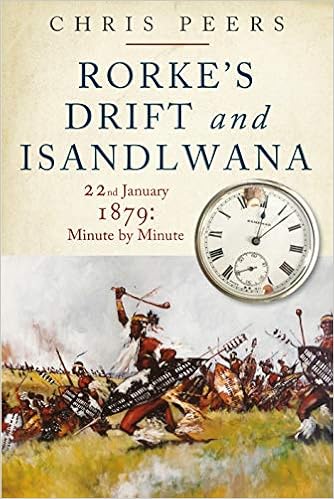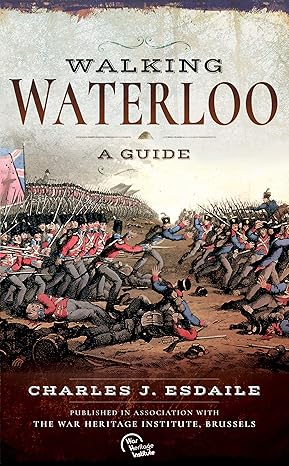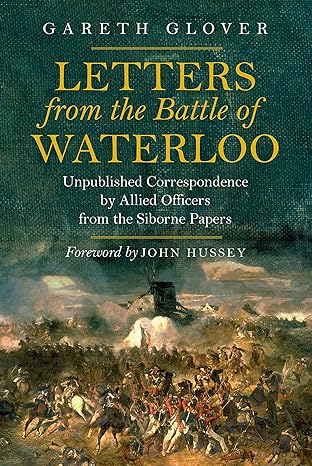Winning Empire
By Vernon Yates
Introduction
The realities of empire building during the French and Indian War forced both the British and French to face the need for changes on the ground in North America. These changes required a willingness to embrace and adapt to the environment, culture, and to prosecute the war under a national strategy. This work will examine how the British were able to secure victory over the French in North America during the French and Indian War using cultural adaptation, and national strategy.
The French and Indian War in North America became a by product of previous conflicts and failed peace agreement between England and France. The ability to control the fur trade and the fortunes it created became an attraction for enterprising individuals backed by trading companies scattered across North America. Tensions understandably led to conflicts between the French and British as each tried to dominate and supply the fur demand in Europe.[1]
The Treaty of Aix-la-Chapelle of 1748 became the final effort for peace before the French and Indian war and its larger extension The Seven Years War. This treaty gave each country the time and space to better prepare for the next conflict there would be no Entente Cordiale.[2]
The French had been in the Canada region for almost hundred-fifty years since the earliest exploration. During this time, the French and their Indian allies have slowing began an adaptation of each other’s culture and beliefs. This adaption gave the French an early advantage and reason for their early success against the British.[3]
The adaptions of the fighting tactics by the French from the Indians were one of the reasons for the early defeats of the British. The French had found that ambushes against a linear formation in the heavy woods of North America caused confusion and defeat amongst the enemy. With confusion in the ranks, the French and their allies would be able to isolate small pockets of men and destroy them.
This technique of irregular warfare struck fear into the British settlers and caused governments of the colonies to divert scare resources. This was due to the more familiar linear tactics of the European battlefields that these officers came of age fighting on. Moreover, many felt the unneeded bloodshed of the defeated by the Indians were the work of savages.4 The French had early advantage over the British in the way of family blood. The French had intermarried with many of the tribes and became family. This family relationship is something that the British had a hard time countering to any effect in their favor. This adaptation of French culture also took a strict anti-British teaching.[5]
The French also had early victories over the English because of their approach to commerce with the tribes. The French only left a small footprint on the land because they only set up trading posts to trade with the Indians. There was no large-scale farming or settlements by the French to interrupt the native hunter grounds like the British.[6]
The fur trade came about due to the demand for fur fashions made in Europe. European trappers along with the tribes would hunt and trap these animals for their fur. The Indians also became dependent on this trade for tools, pots, and lead shot. Therefore, the fur trade had become a life-sustaining requirement for the survival of the Indians.
The lack of a national strategy and the will to adapt to conditions on the ground stopped early attempts by the British to push back the French and build empire. It appeared at the time neither the colonists are the Crown wanted to committed large sums of resources to North America.[7] At the same time, the British wanted to keep it a local event between colonists on both sides. This lack of national strategy and the lack of adaption plays out again as the Governor of Virginia Robert Dinwiddie sent a young Major by the name of George Washington to demand that France leave their lands.[8] As expected, the French sent the young Washington back to Dinwiddie with a polite but strong answer of refusal to leave.
The report of Washington’s expedition and observances of the French power and their fort building caused alarm in London. The response from the report by London was to approve of another expedition again led by Washington to build forts and if need be remove the French from the King’s lands. The ill prepared and unexperienced Washington would again become the face of the England’s national strategy and response to the French threat to Empire.
Washington’s ill-prepared expedition did find the French however; the results were not what Washington had hoped they might have been. With the discovery of the enemy, things quickly got out of control from Washington with an unprovoked attack by his men. This attack would wound several men and later have the leader Joseph de Villiers de Jumonville executed by Indians.[9] The French would claim that, these groups of Frenchmen were on a diplomatic mission to secure peace talks. The coordinate effort by the British to establish a strategy to confront the French still lacked a national effort from London.[10]
The British finally realized that to push back the French threat they would have to committee more resources. Part of this new effort involved large troop movements with a new commander by the name Edward Braddock. Braddock would now attempt to force his will on the French in the Ohio Valley. The General had the backing of the Crown and the troops to accomplish this this task. From the start, the administrative piece of Braddock’s expedition became an omen for its future. Because of the late arrivals of raw untrained troops and supply stores that went unfilled due to the lack of coordination.[11]
Braddock had complete control over all military matters in the colonies due to the power given to him by the Crown. Because London wanted a unified effort from the colonies and not piece, meal approaches from the past. Sadly, neither side embraced a unified approach to combat however, both sides developed enduring bias perspectives of each other.
It was these bias perspectives that Braddock carried with him when judging the fighting abilities of the settlers. He also had absolute no regard for the fighting force of any group of Indians. It was the General’s belief that the time tested linear tactics could destroy any force that tried to oppose him. General Braddock’s bias beliefs and perspectives caused his expedition to run straight into a French and Indian force that annihilated his force.[12] The skulking tactics of the enemy overwhelmed Braddock’s trusted linear tactics. These tactics also caused Braddock to give his life for his King in the backwoods place that became the state of Pennsylvania. This disaster left the Ohio region and Albany open to a thrust from the North by the French and their allies.[13]
The replacements for General Braddock came in rapid succession due to the government in London enabled to piece together a national strategy to defeat the French. The first victim of this of debacle in planning was Governor William Shirley from the colony of Massachusetts. London was still in shock from the annihilation of General Braddock’s expedition force and turned to a civilian that had no real military experience to be the Commander in chief for the North American operations.[14] Shirley immediately set up unorthodox command system were the British and Colonist had different chain of commands due to the bias culture beliefs against each group. In addition, the British officer in the ranking system would always outrank the officer from the colonies regardless of the rank.
Governor Shirley also showed his lack knowledge when planning military operations directed at Oswego from Albany. By allowing the expedition to move at a crawl pace toward their objective, the French disappeared in a retreat. Shirley decided to rebuild and fortify this dilapidated post and not to pursue the retreating French. This was probably the best of the bad options because the Governor had failed to plan for rations for his Soldiers and forage for his animals.
London’s next attempt formulate a strategy to check the French came in the form of John Campbell better known by his peerage title of Lord Loudoun. Lord Loudoun’s claim to fame was his successful defeat of Jacobite forces in Scotland that previously revolted against the King. Lord Loudoun was a poor choice to rally the colonists into cohesive team capable of defeating the French for empire.[15] He had power over both civilian and military authorities in the colonies granted by London. With the power granted to him, he should have able to formulate a strategy to take the fight to the French. Instead, local politics entangled him and he lost focus on his task in front of him. Lord Loudoun felt that the colonist only cared about making profit and their greed would be the downfall of the Empire in the New World. His views came about when found out that there were settlers trading with the French. To combat this he imposed harsh measures in the farming areas and closed the ports. For the mainly agriculture economy it brought hardship and famine on the local population. The very individuals that Lord Loudoun needed he placed a burden on them.
Lord Loudoun did establish roads into the North and had supply depots built along these routes of invasion.[16] The positive actions that he established were the first attempt to apply any kind of standardization to the war effort. However, his abandonment of the attack on the fortress of Louisburg caused his downfall and return to England.
The French for the most part were able to check the moves of the British for the first four years of the war. Despite the British advantage in numbers of Soldiers arriving from England. These early successful victories by the French came about due to their adaptation, culture beliefs, and embracing their environment.[17] The French Canadians at the time of the French and Indian War had already embrace and adapted to the ways of the Indian tribes. The tribes sought the items that the French had to trade with because it improved their daily lives. The French also had the advantage through the marriages to Indian women. This taking of native women for wives allowed the French too fully understand and become a part of the tribal culture.
The French in the early part of the conflict had the ability to arrive on the scene quickly and confront British. The French had learn to embrace their environment and the weather as a friend.[18] They learned that the rivers and lakes were a littoral highway that gave them the ability move troops and supplies quickly.
Even with the advantages that French had over the British in the early stages of the fighting. The French still had their problems with infighting on how best to run the campaign against the British.[19] This disagreement came over power and the direction of the war between Marquis de Vaudreuil and Marquis de Montcalm. Being born in Canada, Vaudreuil embraced the Indians, and understood their culture. He also used their knowledge of the land for reconnaissance and shock troops during the battles with the British.
Even though Vaudreuil had been successful, the French government felt to resist the growing threat they needed a trained military officer from France to lead the war effort. Montcalm took over the war effort and strategy in the defense of New France.[20] Vaudreuil still control the civilian government however not the war effort. Montcalm despite being a tactician from the old battlefields of Europe became successful in taking the British. Montcalm understood the advantages of well-placed artillery and he always had a trained Engineer on site. This combined arms approach enabled early defeats on the British.[21] However, as the resources from France dried up Montcalm and Vaudreuil came into disputes on resources and efforts.
The French and Indian War for the British seemed to being going as the previous King George War had gone in a draw. This would ensure that the British would again have to fight the French in a future war and perhaps under worse conditions.[22] Things not only looked bad in the North America they looked just as bad in Europe. The King’s lands in the Hanover area were being threat by a combined French and Austrian force.[23]
The Crown seeing the need for a change in the leadership of the war effort picked William Pitt to lead the war. This was despite the King having a dislike for Pitt from his previous actions in Parliament. However, the British were in a major crisis as fear griped England on the possibility of French invading England.
Pitt put not just the country of England on a war footing but the whole Empire became a war machine. He recalled Lord Loudoun back to London and replaced him with James Abercrombie to lead the effort. Unfortunately, Abercrombie would find results and victories were the only thing that counted to Pitt.[24] Abercrombie received orders back to England also due to his failure to take Fort Ticonderoga from the French, despite out numbering them.
Pitt played on the strengths that England had to establish his national strategy and ensured that the Exchequer fully funded the strategy. Pitt immediately used the strength of the Royal Navy in blocking ports of Brest and Toulon. By doing this, Pitt used the act of starvation of New France as an element in his strategy. Even though some French ships were able to run the blockade, troops and supplies became scarce.
Pitt also embraced the notion that the waterways like the Saint Lawrence River were roadways that the British must control. It was much easier on the men and beast to float the river than cutting roads through the wilderness. In addition, the Royal Navy could be on top of their prey quickly before the opposing force could react.[25] Pitt’s strategy of waterways also limited the ability for Indian ambushes to do harm to Soldiers as they moved to contact.
Embracing and adapting to the surroundings of North America furthered Pitt’s strategy of the destruction of New France. He encouraged the colonies to be a part of his team by paying for the recruitment and paying for locals on the ground. The troublesome rank structure between the Soldiers became outdated for field grade provincial officers and changes came about to reflect the growing team Pitt built.
Pitt also rid himself of losing commanders from England that could not win are execute his national strategy for the country. The replacements for the previous failures were John Forbes, James Wolfe, and John Amherst men that would attack the French relentlessly. There would be no excuses to call off any attacks like had been done in the past operations.
Using American Rangers and establishing light Infantry into the regular ranks demonstrated the ability of adaptation for Pitt’s strategy. This new approach also allowed the Royal Navy to float up and down the Saint Lawrence River while conducting amphibious assaults.[26] The changes that were happening the French could not address, which allowed each of their establishments to fall to the British.
The need to constantly change and adapt while seeking and building empire forced the realities on the British and French. These realities also called for a national strategy that received funds and men from their home countries to execute empire building. The French had early success in this endeavor of empire building. However, the British succeeded with the encouragement of Pitt standing over his map thousands of miles away in his London office.
| * * * |
Show Notes
| * * * |
© 2026 Vernon Yates
Written by Vernon Yates.
About the author:
Vernon Yates he is a retired SGT Major with 31 years service in the United States Army. He is employed as a defense contractor in support of The United States Army SGT Major Academy. He holds a Master Degree in Defense and Strategic Studies the University of Texas at El Paso.
* Views expressed by contributors are their own and do not necessarily represent those of MilitaryHistoryOnline.com.





